| Listing 1 - 10 of 85 | << page >> |
Sort by
|
Book
ISBN: 0002153394 9780002153393 Year: 1993 Publisher: London HarperCollins
Abstract | Keywords | Export | Availability | Bookmark
 Loading...
Loading...Choose an application
- Reference Manager
- EndNote
- RefWorks (Direct export to RefWorks)
History of civilization --- anno 1500-1599 --- Europe --- 930.85.44 --- Cultuurgeschiedenis: Renaissance --- 930.85.44 Cultuurgeschiedenis: Renaissance
Book

ISBN: 9789065509840 Year: 2007 Publisher: Hilversum Verloren
Abstract | Keywords | Export | Availability | Bookmark
 Loading...
Loading...Choose an application
- Reference Manager
- EndNote
- RefWorks (Direct export to RefWorks)
930.85.44 --- 930.85.44 Cultuurgeschiedenis: Renaissance --- Cultuurgeschiedenis: Renaissance --- Art --- Literature --- History of civilization --- History of the Low Countries --- Antiquity --- anno 1500-1799 --- Netherlands
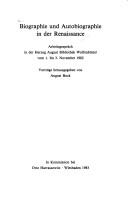
ISBN: 3447024127 Year: 1983 Publisher: Wiesbaden Harrassowitz
Abstract | Keywords | Export | Availability | Bookmark
 Loading...
Loading...Choose an application
- Reference Manager
- EndNote
- RefWorks (Direct export to RefWorks)
Autobiography --- Biography as a literary form --- Renaissance --- 930.85.44 --- 930.85.46 --- 930.85.46 Cultuurgeschiedenis: Humanisme --- Cultuurgeschiedenis: Humanisme --- 930.85.44 Cultuurgeschiedenis: Renaissance --- Cultuurgeschiedenis: Renaissance --- Congresses --- Non-fiction --- anno 1500-1599
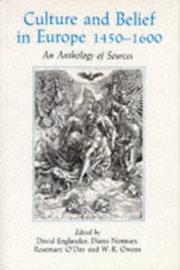
ISBN: 0631169911 Year: 1990 Publisher: Oxford Basil Blackwell
Abstract | Keywords | Export | Availability | Bookmark
 Loading...
Loading...Choose an application
- Reference Manager
- EndNote
- RefWorks (Direct export to RefWorks)
Religious thought --- 930.85.44 --- 930.85.44 Cultuurgeschiedenis: Renaissance --- Cultuurgeschiedenis: Renaissance --- Religion --- Sources --- Europe --- Council of Europe countries --- Eastern Hemisphere --- Eurasia --- Civilization --- Sources. --- History --- History of civilization --- anno 1500-1599
Book
ISBN: 9789462702431 9789461663467 9462702438 9461663463 Year: 2021 Publisher: Leuven Leuven University Press
Abstract | Keywords | Export | Availability | Bookmark
 Loading...
Loading...Choose an application
- Reference Manager
- EndNote
- RefWorks (Direct export to RefWorks)
Early modern heraldry was far from a nostalgic remnant from a feudal past. From the Reformation to the French Revolution, aspiring men seized on these signs to position themselves in a changing society, imbuing heraldic tradition with fresh meaning. Whereas post-medieval developments are all too often described in terms of decadence and stifling formality, recent studies rightly stress the dynamic capacity of bearing arms.0'Heraldic Hierarchies' aims to correct former misconceptions. Contributing authors rethink the influence of shifting notions of nobility on armorial display and expand this topic to heraldry?s share in shaping and contesting status. Moreover, addressing a common thread, the volume explores how emerging states turned the heraldic experience into an instrument of power and policy. Contributing to debates on social and noble identity, 'Heraldic Hierarchies' uncovers a vital and surprising aspect of the pre-modern hierarchical world.
Genealogy. Heraldy --- History of Europe --- Heraldry --- History --- 929.6 --- 930.85.44 --- 930.85.44 Cultuurgeschiedenis: Renaissance --- Cultuurgeschiedenis: Renaissance --- 929.6 Heraldiek. Wapenkunde --- Heraldiek. Wapenkunde --- History. --- Heraldry - History --- Héraldique --- Histoire
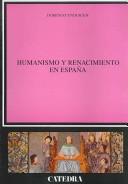
ISBN: 8437612772 Year: 1994 Publisher: Madrid Cátedra
Abstract | Keywords | Export | Availability | Bookmark
 Loading...
Loading...Choose an application
- Reference Manager
- EndNote
- RefWorks (Direct export to RefWorks)
Spanish literature --- anno 1500-1599 --- Humanism --- Renaissance --- Philosophy, Renaissance --- Philosophy, Spanish --- Humanisme --- Philosophie de la Renaissance --- Philosophie espagnole --- 860 "14" --- 930.85.44 <46> --- -Renaissance --- Revival of letters --- Civilization --- History, Modern --- Civilization, Medieval --- Civilization, Modern --- Middle Ages --- Philosophy --- Classical education --- Classical philology --- Philosophical anthropology --- Spaanse literatuur--?"14" --- Cultuurgeschiedenis: Renaissance--Staten van het Iberische Schiereiland --- History --- -Spaanse literatuur--?"14" --- -930.85.44 <46> Cultuurgeschiedenis: Renaissance--Staten van het Iberische Schiereiland --- 930.85.44 <46> Cultuurgeschiedenis: Renaissance--Staten van het Iberische Schiereiland
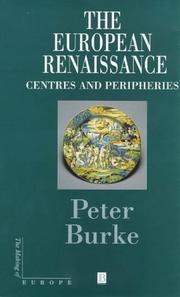
ISBN: 0631198458 Year: 1998 Volume: *11 Publisher: Oxford Blackwell
Abstract | Keywords | Export | Availability | Bookmark
 Loading...
Loading...Choose an application
- Reference Manager
- EndNote
- RefWorks (Direct export to RefWorks)
History of Europe --- History of civilization --- anno 1600-1699 --- anno 1400-1499 --- anno 1500-1599 --- Renaissance --- Culture diffusion --- Diffusion culturelle --- History --- Histoire --- 930.85.44 --- Revival of letters --- Civilization --- History, Modern --- Civilization, Medieval --- Civilization, Modern --- Humanism --- Middle Ages --- Cultuurgeschiedenis: Renaissance --- Renaissance. --- 930.85.44 Cultuurgeschiedenis: Renaissance
Book
ISBN: 3447046546 Year: 2002 Volume: 21 Publisher: Wiesbaden Harrassowitz
Abstract | Keywords | Export | Availability | Bookmark
 Loading...
Loading...Choose an application
- Reference Manager
- EndNote
- RefWorks (Direct export to RefWorks)
Philosophy of language --- anno 1500-1599 --- 930.85.44 --- Cultuurgeschiedenis: Renaissance --- 930.85.44 Cultuurgeschiedenis: Renaissance --- Language and languages --- Meaning (Philosophy) --- Philosophy, Renaissance --- Philosophy --- Semantics (Philosophy) --- History --- To 1500 --- Congresses --- 16th century --- 17th century --- European literature --- 1450-1600 (Renaissance) --- History and criticism
Book
ISBN: 9782503564548 9782503565644 2503564542 Year: 2016 Volume: 25 Publisher: Turnhout Brepols
Abstract | Keywords | Export | Availability | Bookmark
 Loading...
Loading...Choose an application
- Reference Manager
- EndNote
- RefWorks (Direct export to RefWorks)
This volume examines the intersections between material and metaphorical mirrors in medieval and early modern culture. Mirrors have always fascinated humankind. They collapse ordinary distinctions, making visible what is normally invisible, and promising access to hidden realities. Yet, these liminal objects also point to the limitations of human perception, knowledge, and wisdom. In this interdisciplinary volume, specialists in medieval and early modern science, cultural and political history, as well as art history, philosophy, and literature come together to explore the intersections between material and metaphysical mirrors in Europe and the Islamic world. During the time periods studied here, various technologies were transforming the looking glass as an optical device, scientific instrument, and aesthetic object, making it clearer and more readily available, though it remained a rare and precious commodity. While technical innovations spawned new discoveries and ways of seeing, belief systems were slower to change, as expressed in the natural sciences, mystical writings, literature, and visual culture. Mirror metaphors based on analogies established in the ancient world still retained significant power and authority, perhaps especially when related to Aristotelian science, the medieval speculum tradition, religious iconography, secular imagery, Renaissance Neoplatonism, or spectacular Baroque engineering, artistry, and self-fashioning. Mirror effects created through myths, metaphors, rhetorical strategies, or other devices could invite self-contemplation and evoke abstract or paradoxical concepts. Whether faithful or deforming, specular reflections often turn out to be ambivalent and contradictory: sometimes sources of illusion, sometimes reflections of divine truth, mirrors compel us to question the very nature of representation.
History of civilization --- specular reflection --- mirrors --- Symbolism --- Mirrors --- Mirrors in literature --- History --- Aberration, Chromatic and spherical --- Looking-glasses --- Furniture --- Optical instruments --- Representation, Symbolic --- Symbolic representation --- Mythology --- Emblems --- Signs and symbols --- 930.85.42 --- 930.85.44 --- 930.85.44 Cultuurgeschiedenis: Renaissance --- Cultuurgeschiedenis: Renaissance --- 930.85.42 Cultuurgeschiedenis: Middeleeuwen --- Cultuurgeschiedenis: Middeleeuwen --- cultuurgeschiedenis
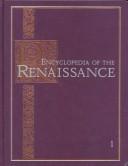
ISBN: 0684805146 0684805081 068480509X 0684805103 0684805111 068480512X 0684805138 Year: 1999 Publisher: New York, N.Y. Charles Scribner's Sons
Abstract | Keywords | Export | Availability | Bookmark
 Loading...
Loading...Choose an application
- Reference Manager
- EndNote
- RefWorks (Direct export to RefWorks)
"Conceived and produced in association with the Renaissance society of America, this work presents a panoramic view of the cultural movement and the period of history beginning in Italy from approximately 1350, broadening geographically to include the rest of Europe by the middle-to-late-15th century, and ending in the early 17th century. Each of the nearly 1,200 entries provides a learned and succinct account suitable for inquiring readers at several levels. These readable essays covering the arts and letters, in addition to everyday life, will be appreciated by general readers and high-school students. The thoughtful analyses will enlighten college students and delight scholars. A selective bibliography of primary and secondary sources for further study follows each article."--"Outstanding reference sources 2000", American Libraries, May 2000. Comp. by the Reference Sources Committee, RUSA, ALA.
Art --- History of Europe --- anno 1400-1499 --- anno 1500-1599 --- Renaissance --- Encyclopedias --- Encyclopédies --- 930.85.44 --- Revival of letters --- Civilization --- History, Modern --- Civilization, Medieval --- Civilization, Modern --- Humanism --- Middle Ages --- Cultuurgeschiedenis: Renaissance --- History --- 930.85.44 Cultuurgeschiedenis: Renaissance --- Encyclopédies --- Civilisation de la renaissance --- Dictionnaires --- Dictionnaires, encyclopedies, etc.
| Listing 1 - 10 of 85 | << page >> |
Sort by
|

 Search
Search Feedback
Feedback About UniCat
About UniCat  Help
Help News
News